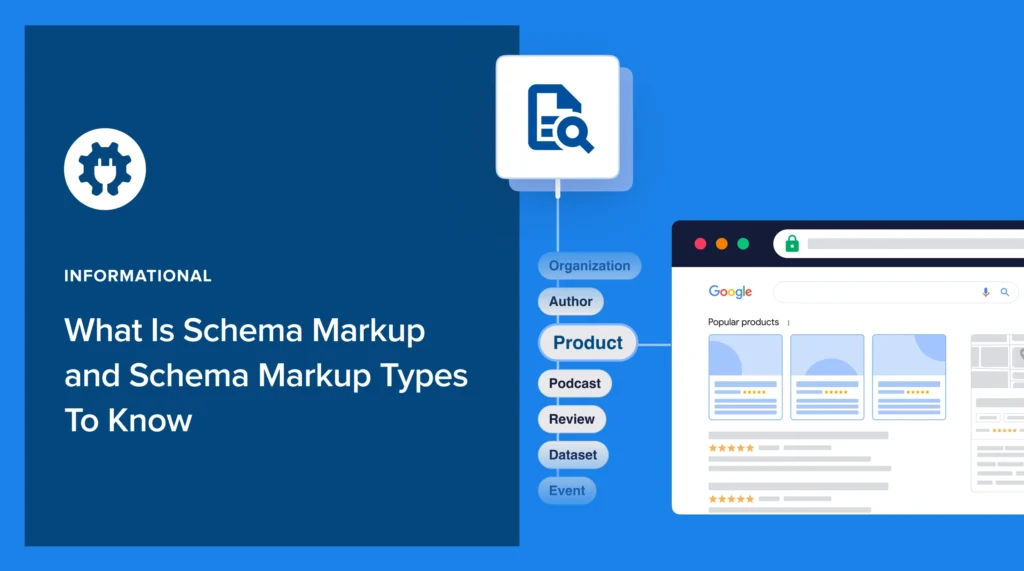If you’re working on SEO in 2025, you already know that ranking on Google is no longer just about keywords and backlinks. Search engines now rely heavily on structured data to understand your content better and that’s exactly where Schema Markup comes in.
Schema Markup helps search engines understand what your content means, not just what it says. It boosts visibility, improves click-through rates, and increases your chances of appearing in rich results like FAQs, product snippets, star ratings, breadcrumbs, and more.
In this detailed guide, WaffleBytes explains everything you need to know about structured data, how it works, why it matters, and how you can use it to improve your website’s SEO performance.
1. Understanding Schema Markup: The Basics
Schema Markup (also known as structured data) is a code added to your website that helps search engines better understand your content. It uses a standardized vocabulary developed by major search engines like Google, Bing, Yahoo, and Yandex.
Schema is written in formats like:
- JSON-LD (recommended by Google)
- Microdata
- RDFa
Among these, JSON-LD is the easiest and cleanest to implement without disturbing your site’s HTML.
Example: Simple Schema Snippet (JSON-LD)
{
"@context": "https://schema.org",
"@type": "Article",
"headline": "What Is Schema Markup?",
"author": "WaffleBytes",
"datePublished": "2025-11-19"
}
This small code helps Google understand that your page is an article, who wrote it, and when it was published.
2. Why Schema Markup Is Important for SEO
Structured Data doesn’t directly increase rankings (Google confirmed this), but it dramatically improves visibility and click-through rate, which indirectly boosts SEO.
2.1 Helps Google Understand Your Content Better
Schema tells search engines exactly what your page is about:
- A product?
- A recipe?
- A course?
- A blog post?
- A local business?
- A service page?
2.2 Boosts Click-Through Rates (CTR)
Pages with Structured Data often appear as rich snippets, which attract more attention.
- FAQ dropdowns
- Star rating and reviews
- Product price, stock availability
- How-to steps
- Breadcrumbs
These visually enhanced results increase CTR by 20–50% in many cases.
2.3 Makes Your Website Eligible for Rich Results
Rich results stand out compared to regular blue-link results. With Schema, you can target:
- Article rich results
- Product rich cards
- Recipe rich cards
- FAQ rich snippets
- Organization schema
- Event schema
- Local business schema
- Video rich results
- Course rich results
- Job posting rich results
For websites like WaffleBytes and clients you serve, this can significantly improve organic visibility.
3. How Schema Markup Works
Schema Markup converts human-readable content into machine-readable code.
For example:
Human understanding:
“Apple iPhone 15 Pro – Price ₹1,29,900 – In Stock – Rated 4.8 stars”
Structured data identifies:
- Product name
- Price
- Availability
- Reviews
- Rating
- Brand
When Google understands this clearly, it can generate a product rich result.
4. Types of Schema Markup You Can Use

Depending on your website, you can use different types of Schema Markup.
4.1 Article Schema
Ideal for blogs, news sites, and editorial content.
4.2 FAQ Schema
Shows collapsible FAQ dropdowns directly on Google search results.
4.3 Local Business Schema
Perfect for local brands, restaurants, and services.
4.4 Product Schema
Shows price, availability, reviews, and ratings.
4.5 Review Schema
Helps generate star ratings in SERPs.
4.6 Breadcrumb Schema
Improves navigation and clickable breadcrumbs in SERPs.
4.7 Person / Organization Schema
Great for author profiles or brand visibility.
4.8 Video Schema
Boosts chances of ranking in Google Video Carousel.
4.9 How-To Schema
Shows step-by-step instructions directly in search results.
4.10 Event Schema
Useful for promoting conferences, workshops, or launches.
Choosing the right Schema depends on your business goals and content type.
5. How to Add Schema Markup to Your Website
5.1 Using Google’s Structured Data Markup Helper
Google offers an easy tool to create Schema Markup especially for beginners.
Steps:
- Open Structured Data Markup Helper
- Choose content type (Article, Product, etc.)
- Highlight elements on your site
- Generate JSON-LD code
- Paste it into the <head> section of your page
5.2 Schema Plugins for WordPress
If your site uses WordPress, plugins make it even easier:
- Rank Math (best for SEO + Schema)
- Yoast SEO
- Schema Pro
- AIO SEO
These plugins automatically generate and manage Schema.
5.3 Manually Adding Schema Markup
If you’re comfortable with code:
- Add a <script type=”application/ld+json”> inside <head>
- Copy/paste your JSON-LD code
- Validate using Google’s tools
6. Best Practices for Schema Markup Implementation
6.1 Follow Google’s Official Guidelines
Google is strict about Schema usage. Don’t misuse schema (e.g., fake reviews).
6.2 Use JSON-LD Format
Google prefers JSON-LD because it’s clean and less error-prone.
6.3 Keep Schema Updated
If your content updates, update the Schema too.
6.4 Validate Regularly
Use Google Rich Results Test and Search Console to detect:
- Warnings
- Errors
- Opportunities
6.5 Don’t Overuse Schema
Not every page needs structured data. Use where necessary and relevant.
7. Benefits of Adding Schema Markup to Your Website
7.1 Better Search Visibility
Schema helps Google understand your content, boosting impressions.
7.2 Higher Click-Through Rate (CTR)
Rich snippets attract more clicks.
7.3 Increased Traffic
Higher CTR = higher traffic.
7.4 Better User Engagement
Users love clear and informative results.
7.5 Competitive Advantage
Most websites still don’t implement Schema properly. Doing it right puts you ahead.
8. Schema Markup Examples for Different Industries
8.1 For Blogs
Use Article, FAQ, Breadcrumb schema.
8.2 For E-commerce
Use Product, Offer, Review schema.
8.3 For Local Services
Use Local Business schema.
8.4 For Restaurants
Use Menu + LocalBusiness schema.
8.5 For Digital Marketing Agencies
- Service schema
- Organization schema
- Article schema
- Review schema
This helps clients’ websites rank better and drives more conversions.
9. Common Mistakes to Avoid
- Using fake review schema
- Adding irrelevant schema types
- Forgetting to validate
- Using outdated microdata format
- Duplicate schema markup
- Failing to update schema after editing content
Avoiding these issues ensures your structured data performs well.
10. Does Schema Markup Improve Rankings?
Directly? No.
Indirectly? Absolutely yes.
Schema leads to:
- Better indexing
- Higher CTR
- Rich snippets
- Improved user experience
Schema Markup is one of the most powerful yet underused SEO strategies. It helps Google better understand your content, improves how your website appears in search results, and boosts click-through rates.
For businesses and websites managed by WaffleBytes, implementing structured data can significantly improve visibility, trust, and conversions.
If you haven’t added Schema Markup yet, now is the perfect time to start and the results can be impressive.
FAQs About Schema Markup
Not mandatory, but highly recommended. It improves visibility and CTR, which indirectly boosts rankings.
Google recommends JSON-LD, as it's easier to manage and update.
Yes. Tools like Rank Math, Yoast, and Google’s Markup Helper make it simple.
No, but it makes your pages eligible. Google decides which results to show.
Use Google Rich Results Test or Search Console’s Enhancements Report to validate.

